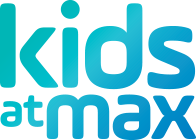
We are ALL ‘Visual Learners’. Have you looked at your phone today? Have you been on the computer? Do you take pictures of your food or screenshots of your shopping wish lists?
We use calendars, maps, shopping lists and other visual helpers every day to assist us so why not use visuals to help kids out, too!
What are Visuals?
Visuals are pictures, photographs, drawings, symbols, gestures, facial expressions and body movements.
Visuals:
- Stand out
- Direct our attention
- Maintain our attention
- Can be used alongside words to enhance comprehension/understanding
- Can be used to recall information without verbal cues needed
- Increase speech and language development.
Visuals can be used with children to set routines, encourage verbal language, assist with reading and writing, regulate behaviour and as reminders. They may also reinforce positive behaviours and newly acquired techniques. Here are 5 ways to use visuals at home.
- Schedules
Get some colourful A3 and A4 cardboard, your computer, printer, some glue and scissors, and get making! Children respond well to structure and routine (don’t we all?). They benefit from knowing what is expected of them in a day and which events are coming up. Routines promote feelings of safety and security and often encourage positive behaviours. By simply drawing up a grid on a large poster to allow space for each day of the week, photos, pictures and printouts (durable laminated copies are best ) can be placed beneath specific days to prepare your child for the week ahead.
*Make sure it is interactive! Have your child be the one to place each visual beneath the corresponding day and encourage them to talk about each event as you go.
- Timers
Waiting can be difficult and often boring for children.You may notice them interrupting, pulling or snatching things and sometimes even exhibiting negative behaviours such as screaming or physically hurting others. Alongside verbal warnings (“We are going in 5 minutes”) visual timers can be used to help your child endure periods when they need to wait patiently. These can either be your phone’s timer (under ‘Clock’), real sand timers or digital timers from a variety of free and reasonably-priced timer applications on your device (e.g. ‘Time Timers app’).
- Personal/Social Stories
Take pictures and write stories about your child’s adventures (going on holiday, a trip to the zoo etc.) as a memento for them to share with other people in their life. Create and print from Word, Powerpoint or a variety of downloadable applications (e.g. Story Creator, Pictello, Social Stories Creator).
- Reward Charts
Children are more likely to exhibit and repeat a certain behaviour if they are praised and rewarded immediately after. Use simple visual reward charts, e.g. 3 stars then I can have iPad time. Make sure your child knows the specific behaviour they can be rewarded for (e.g. “Good listening to Mum”, “Good waiting while Mum is talking on the phone”) and offer rewards immediately so that your child is aware of the association between the behaviour and the reward.
- Gestures
Processing verbal information is a complex task that can be difficult for some children. Adding a simple gesture (pointing, nodding, counting with your fingers) to the information you provide to children can simplify this process and increase their understanding.
If you have concerns about your child’s developmental well-being and would like further assistance, please contact Kids At Max on (03) 9702 4447.
Written by Kids At Max Speech Pathologist.
